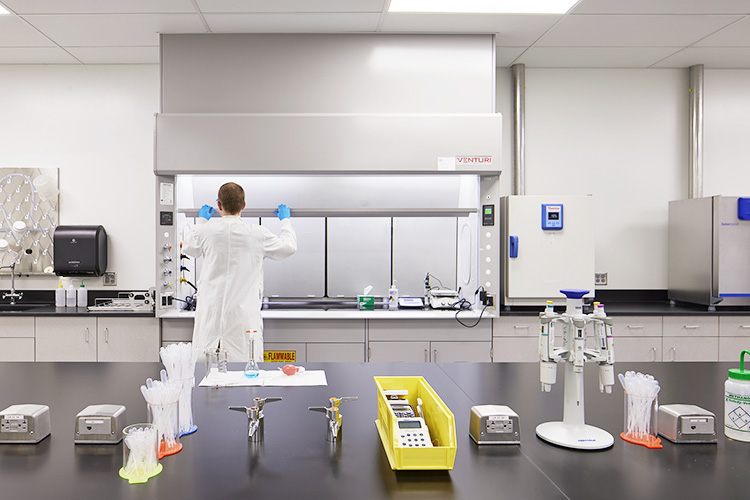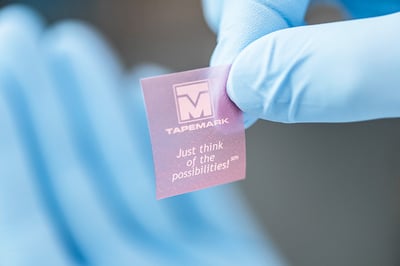At Tapemark, we talk a lot about pharmaceutical contract manufacturing. But even we have to admit… “pharmaceutical contract manufacturing” could mean a lot of things if you don't have the right context.
Let’s explore the basics of the pharmaceutical contract manufacturing industry.
What is Pharmaceutical Contract Manufacturing?
Pharmaceutical contract manufacturing is the process in which pharmaceutical drugs are produced on a contract basis.
In other words, a drug company hires a manufacturing company to make their drugs for them, and drug companies that produce a critical mass of your product can often streamline their productions by partnering with a manufacturing company.
Why partner with a manufacturing company?
Pharmaceutical drugs have complex formulas and require specific equipment and techniques when mass-produced. The whole process can be complicated and time-consuming — and the final products are held to rigorous standards and specifications.
Partnering with a contract manufacturing company provides a flexible and streamlined approach to bringing a quality drug to market. Simply put, it’s easier and faster.
CMO vs CDMO: What’s the difference?
A contract manufacturing organization (CMO) is a company that manufactures a pre-formulated drug, whereas a contract development and manufacturing organization (CDMO) is a company that handles everything from pre-formulation and formulation development to clinical trials and production.
A CDMOs’ through-process reliability can be attractive since all services are completed at one location. But both types of organizations can integrate new drug products into the pharmaceutical industry with efficiency and accuracy.
What types of drugs can be manufactured?
There are countless types of drugs and ways they’re administered, but the most common drug delivery systems are oral, topical, and parenteral (injection).
Most people are familiar with tablets and capsules taken orally, and the application of ointments and patches directly to the skin. But there are even more fascinating and innovative ways that medicines can be delivered into the body.
What does the pharma manufacturing process look like?
Every drug has its own complex formula and requires a specific manufacturing procedure. However, once a drug has a developed formula, the pharmaceutical contract manufacturing process can be broken down into four basic steps.
Step #1: Blending
Blending is the mixing of the active pharmaceutical formula together with non-active ingredients to develop a consistent mixture. Without reaching an unvaried consistency the drug won’t be stable enough to reach its approved final dosage form.
These excipients (inactive substances) blended with the drug can be anything from added moisture, to adhesives, to tasty flavor additives.
Keep in mind that the blending process is extremely delicate and every variable has to be perfect. Precision in the ingredients, viscosity, temperature, and time is vital in order to reach the optimum state of uniformity.
Step #2: Coating
The purpose behind adding a coating will vary, but the most common reasons are to improve taste, add color, or to make the drug easier to handle, all without altering the consistency or makeup of the drug.
A drug contract manufacturing company will first evaluate if the formula is water- or solvent-based, and introduce the blend to determine the exact temperature, speed, and dimensions needed. Then the blend is metered onto, or into, the coating material.
Step #3: Serialization
After the drug is fully completed, it’s ready to be packaged for distribution. But before that, each saleable unit must undergo serialization.
In 2013, congress enacted the Drug Supply Chain Security Act (DSCSA) that created a set of requirements to ensure fully traceable pharmaceutical products. This gives the FDA improved oversight, and allows them to protect citizens from counterfeit, stolen, contaminated, or harmful drugs.
Serialization is the process of assigning a specific and unique serial number to the completed drug. This number is affiliated with the drug’s origin, lot code, bar code, batch number, and expiration date. With the help of a CMO, every drug gets named and tagged.
Step #4: Shipment
The final step of pharma contract manufacturing is getting the drugs delivered to the client, and ultimately to consumers.
Pharmaceutical shipping requires appropriate packaging and serialization so the correct batches of drugs can be shipped on time and in excellent condition. Whether it’s a single carton or giant pallets, shipment is ultimately the last part of a drug manufacturing contract.
Take a closer look at these four steps and the equipment that makes them possible.
What safety regulations does a CMO/CDMO follow?
The pharma contract manufacturing industry follows certain government-issued guidelines called the Current Good Manufacturing Practice (CGMP) Regulations. Under these regulations, the FDA carefully monitors the manufacturing methods, facilities, and controls of all drug manufacturers.
In a nutshell:
- All equipment is maintained and precisely calibrated to make sure the end product is uncontaminated and safe for use.
- All hazardous materials are carefully regulated and controlled.
- Advanced sensors and data collection systems continuously monitor raw substances, finished products, and equipment.
- Working conditions are maintained at the highest level of safety. Eyewash stations, slip-resistant floors, and protective insulation are standard.
CMOs are the future of the drug contract manufacturing industry
 The pharmaceutical manufacturing process is demanding. Research and testing takes years, and manufacturing safe and stable drugs is an enormously costly venture.
The pharmaceutical manufacturing process is demanding. Research and testing takes years, and manufacturing safe and stable drugs is an enormously costly venture.
That’s why partnering with an industry-leading CMO/CDMO gives companies a leg up in the complicated drug manufacturing market. As the demand for pharmaceuticals expands in the coming decades, outsourcing will reduce the complicated logistical burden of in-house manufacturing.
Partner with a trailblazing CDMO
Are you a pharmaceutical company interested in outsourcing with a contract manufacturer? Talk with our experts to discover how our rapid, flexible, and customized drug development and manufacturing capabilities can meet your needs.
